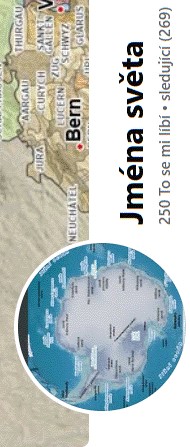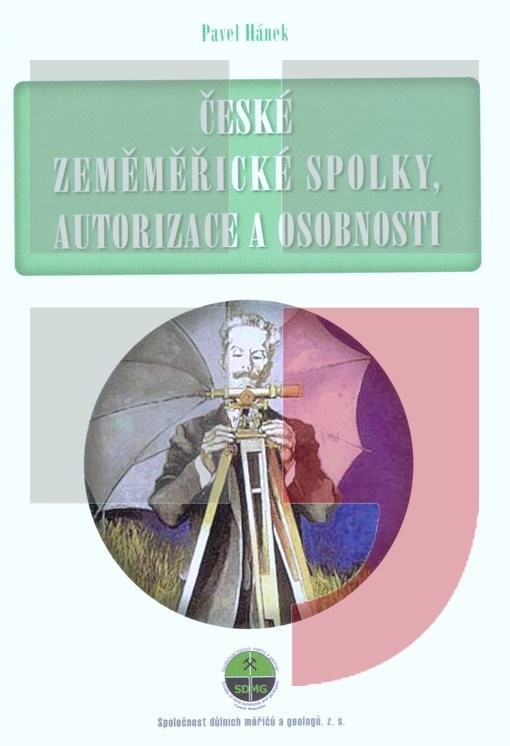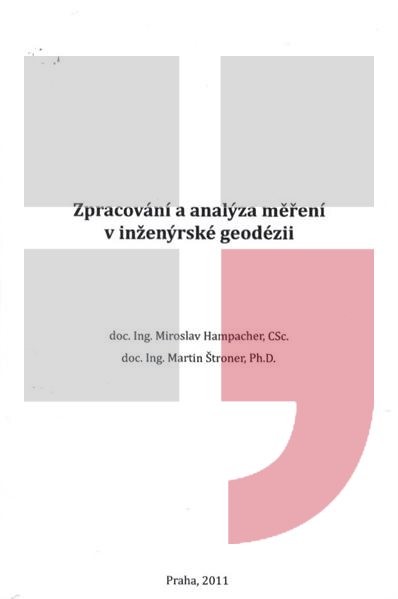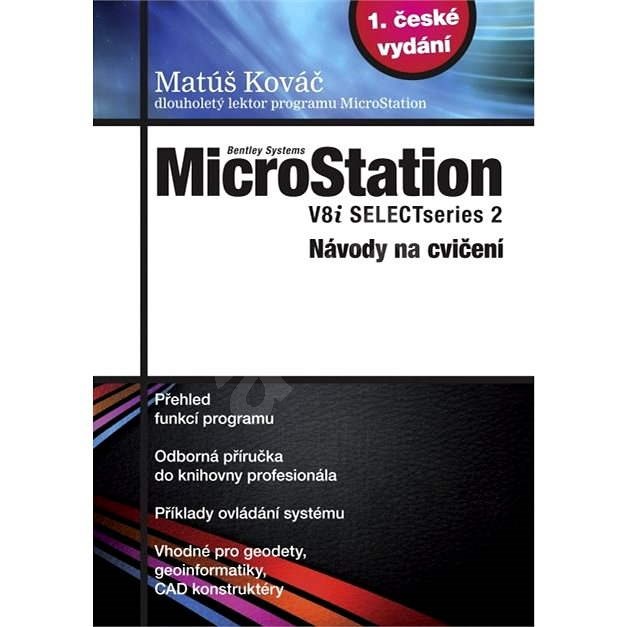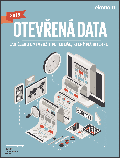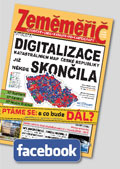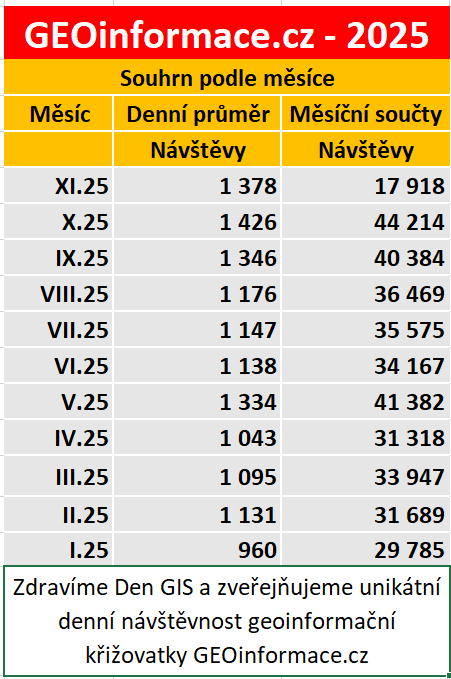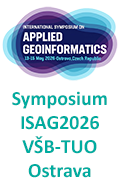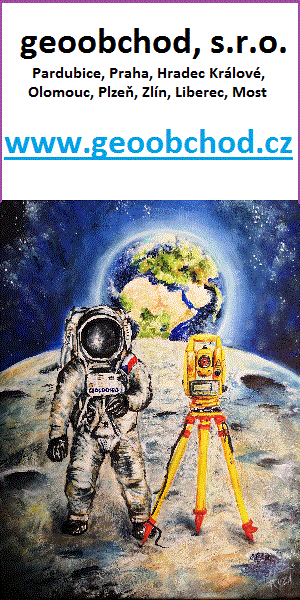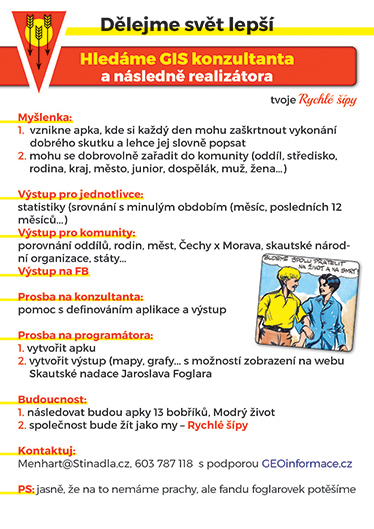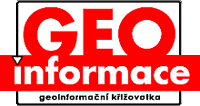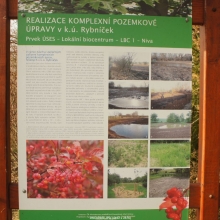zprávy
zdroje zpráv:Pozvánka na konferenci GIS Esri v ČR 2015
20.10.2015 11:15 CEDA Maps a.s. Společnost Central European Data Agency, a.s. vás srdečně zve na konferenci GIS Esri v ČR. Tradiční akce se koná v termínu 4. a 5. listopadu 2015 v Kongresovém centru Praha.Česko - Slovensko 2444:426
20.10.2015 8:11 Komora pozemkových úprav SRTaké je vzájomné skóre pri porovnaní počtu zahájených komplexných pozemkových úprav v oboch republikách.
(Stav pozemkových úprav v České republice a Slovenské republice aneb "Když dva dělají totéž, není to totéž", Muchová,Z. - Jusková,K. - Pochop,M.,Geodetický a kartografický obzor, 2015/4)...
20151019-Stanoviska vyhlášky č 357/2013 Sb
19.10.2015 14:16 ČÚZK - předpisy a opatření /Aktuality-resort/2015/20151019-Stanoviska-vyhlasky-c-357-2013-Sb20151019-Stanoviska vyhlášky č 357/2013 Sb
19.10.2015 14:16 ČÚZK /Aktuality-resort/2015/20151019-Stanoviska-vyhlasky-c-357-2013-SbKoordinační skupina pro pozemkové úpravy
16.10.2015 22:04 Asociace poskytovatelů služeb v pozemkových úpravách Cílem zřízení Koordinační skupiny pro pozemkové úpravy (KSPÚ) je umožnění vzájemné komunikace státu, zastoupeného Státním pozemkovým úřadem, s odbornou veřejností, která je garantem kvality a celkové úrovně zpracování návrhů pozemkových úprav. Vzájemná spolupráce bude přispívat ke zvyšování kvality prováděných prací i k efektivnímu a účelnému vynakládání veřejných prostředků plynoucích ze státního rozpočtu i z evropských…Gisat na konferenci IGARSS
16.10.2015 15:10 Gisat Gisat na této konferenci prezentoval výsledky projektu ISTAS (Integrated snow monitoring with uncertainty analysis) zaměřeného na integraci dat z různých senzorů pro regionální monitorování sněhové pokrývky.20151014-GaKo-10-2015
14.10.2015 14:47 ČÚZK - předpisy a opatření /Aktuality-resort/2015/20151014-GaKo-10-201520151014-výběrové řízení-vrchní inspektor/ka
14.10.2015 13:20 ČÚZK - předpisy a opatření /Aktuality-resort/2015/20151014-vyberove-rizeni-vrchni-inspektor-ka20151014-výběrové řízení-vrchní inspektor/ka
14.10.2015 13:20 ČÚZK /Aktuality-resort/2015/20151014-vyberove-rizeni-vrchni-inspektor-kaMapová aplikace Územně analyti
14.10.2015 12:00 Jihočeský kraj Mapová aplikace Územně analytické podklady byla aktualizována k 29. 9. 2015.Firemní teambuilding Bohdaneč u Zbraslavic
14.10.2015 12:00 Hrdlička V rámci organizačních změn v naší společnosti jsem v polovině září uspořádal víkendovou „tmelící akci“ pro vedoucí regionů (Marii Běželovou, Petra Pavelku, Davida Maška a Pavla Hladíka) v hotelu Argus v Bohdanči u Zbraslavic. Také byli přizváni ostatní účastníci velké výrobní porady, jmenovitě tedy Martin Klečka, Zuzana Gažiová a Lukáš Opat. Akce byla dobrovolně povinná. Smyslem aktivity, kromě příjemně stráveného času, bylo sblížit vedoucí našich nových organizačních jednotek tak, aby se zvýšila jejich vzájemná kooperace.Mapová aplikace byla aktualiz
14.10.2015 12:00 Jihočeský kraj Mapová aplikace byla aktualizována k 29. 9. 2015.Přednáška Ing. Poláčka ZRUŠENA!
14.10.2015 10:33 Katedra geoinformatiky UP Olomouc Vážení kolegové, drazí studenti,přednáška Ing. Poláčka (Aktuální trendy ve zpřístupňování dat ČÚZK veřejnosti) se dnes z technických důvodů NEKONÁ!
50% SLEVA - KONTROLA A ÚDRŽBA
13.10.2015 11:00Jako jediný autorizovaný servis přístrojů SOKKIA v České republice Vám nabízíme kontrolu a údržbu Vaší totální stanice SOKKIA se slevou 50%. Do konce března 2016 si můžete domluvit servisní prohlídku na telefonních číslech 724 013 041 (Praha) nebo na 724 013 025 (Brno).
20151013-výběrová řízení ředitelé KP Brno-venkov, Brno-město, Bruntál, Krnov, Nový Jičín a Opava
13.10.2015 9:26 ČÚZK /Aktuality-resort/2015/20151013-vyberova-rizeni-reditele-KP-Brno-venkov,20151013-výběrová řízení ředitelé KP Brno-venkov, Brno-město, Bruntál, Krnov, Nový Jičín a Opava
13.10.2015 9:26 ČÚZK - předpisy a opatření /Aktuality-resort/2015/20151013-vyberova-rizeni-reditele-KP-Brno-venkov,20151013-výběrové řízení správce RÚIAN
13.10.2015 8:05 ČÚZK - předpisy a opatření Oznámení o vyhlášení výběrového řízení na služební místo SPRÁVCE RÚIAN - informace zde.20151013-výběrové řízení správce RÚIAN
13.10.2015 8:05 ČÚZK - předpisy a opatření /Aktuality-resort/2015/20151013-vyberove-rizeni-spravce-RUIAN20151013-výběrové řízení správce RÚIAN
13.10.2015 8:05 ČÚZK /Aktuality-resort/2015/20151013-vyberove-rizeni-spravce-RUIANIntergraph SG&I Becomes Hexagon Safety & Infrastructure
12.10.2015 2:00 Hexagon Safety & InfrastructureIntergraph’s Security, Government & Infrastructure (SG&I) division has rebranded globally as Hexagon Safety & Infrastructure. The new name more closely aligns the business and its industry-leading solutions with parent company, Hexagon.
“Since acquiring Intergraph in 2010, Hexagon has made many strategic and beneficial investments in safety and infrastructure solutions – from research and development to acquisitions and partnerships,” said Steven Cost, president, Hexagon Safety & Infrastructure. “Those investments have helped meet the needs of governments and service providers around the world – improving operations, enhancing enterprise-wide information and reducing the total-cost of ownership for mission-critical and business-critical IT systems.”
“In rebranding Intergraph SG&I as Hexagon Safety & Infrastructure, we’re externally communicating Hexagon’s commitment to our customers and our markets. We’re building on our past as Intergraph and embracing the future as Hexagon. As Hexagon Safety & Infrastructure, we’ll continue to strive to be a trusted partner to our customers, applying expertise and innovation to improve their operations and services,” Cost said.
With the rebranding, Hexagon Safety & Infrastructure has unveiled a new creative identity, new website and new social media presence. Hexagon Safety & Infrastructure will continue to use the Intergraph name in product branding.
Intergraph SG&I Becomes Hexagon Safety & Infrastructure
12.10.2015 2:00 Hexagon Safety & InfrastructureIntergraph’s Security, Government & Infrastructure (SG&I) division has rebranded globally as Hexagon Safety & Infrastructure. The new name more closely aligns the business and its industry-leading solutions with parent company, Hexagon.
“Since acquiring Intergraph in 2010, Hexagon has made many strategic and beneficial investments in safety and infrastructure solutions – from research and development to acquisitions and partnerships,” said Steven Cost, president, Hexagon Safety & Infrastructure. “Those investments have helped meet the needs of governments and service providers around the world – improving operations, enhancing enterprise-wide information and reducing the total-cost of ownership for mission-critical and business-critical IT systems.”
“In rebranding Intergraph SG&I as Hexagon Safety & Infrastructure, we’re externally communicating Hexagon’s commitment to our customers and our markets. We’re building on our past as Intergraph and embracing the future as Hexagon. As Hexagon Safety & Infrastructure, we’ll continue to strive to be a trusted partner to our customers, applying expertise and innovation to improve their operations and services,” Cost said.
With the rebranding, Hexagon Safety & Infrastructure has unveiled a new creative identity, new website and new social media presence. Hexagon Safety & Infrastructure will continue to use the Intergraph name in product branding.
Intergraph SG&I Becomes Hexagon Safety & Infrastructure
12.10.2015 2:00 Hexagon Safety & InfrastructureIntergraph’s Security, Government & Infrastructure (SG&I) division has rebranded globally as Hexagon Safety & Infrastructure. The new name more closely aligns the business and its industry-leading solutions with parent company, Hexagon.
“Since acquiring Intergraph in 2010, Hexagon has made many strategic and beneficial investments in safety and infrastructure solutions – from research and development to acquisitions and partnerships,” said Steven Cost, president, Hexagon Safety & Infrastructure. “Those investments have helped meet the needs of governments and service providers around the world – improving operations, enhancing enterprise-wide information and reducing the total-cost of ownership for mission-critical and business-critical IT systems.”
“In rebranding Intergraph SG&I as Hexagon Safety & Infrastructure, we’re externally communicating Hexagon’s commitment to our customers and our markets. We’re building on our past as Intergraph and embracing the future as Hexagon. As Hexagon Safety & Infrastructure, we’ll continue to strive to be a trusted partner to our customers, applying expertise and innovation to improve their operations and services,” Cost said.
With the rebranding, Hexagon Safety & Infrastructure has unveiled a new creative identity, new website and new social media presence. Hexagon Safety & Infrastructure will continue to use the Intergraph name in product branding.
Python pre Geovedné aplikácie
11.10.2015 17:40 GEOINFORMATIKA.sk Libor Burian, Hana Stanková: Python pre Geovedné aplikácieLibor Burian, Hana Stanková: Python pre Geovedné aplikácie, Univerzita Komenského v Bratislave, Prírodovedecká fakulta, Bratislava, 2015, ISBN: 978-80-223-3947-6Ladislav Čapek o budoucnosti mapových informačních systémů
8.10.2015 14:05 Cleerio Jednatel Geosense poskytl rozhovor pro internetový server Lupa.cz. V něm se zmiňuje například o tom, proč jsou dnes mapové informační systémy tolik potřebné a jak mohou pomoci pečovat o majetekLadislav Čapek o budoucnosti mapových informačních systémů
8.10.2015 12:00 Cleerio Jednatel Geosense poskytl rozhovor pro internetový server Lupa.cz. V něm se zmiňuje například o tom, proč jsou dnes mapové informační systémy tolik potřebné a jak mohou pomoci pečovat o majetek v nejrůznějších tržních segmentech. S vizionářskými pohledy Ladislava Čapka se seznámíte v článku:...V datech územně analytických p
8.10.2015 12:00 Plzeňský kraj V datech územně analytických podkladů Plzeňského kraje byla provedena aktualizace dat technické infrastruktury od poskytovatele ČEZ Distribuce, a. s. (http://geoportal.plzensky-kraj.cz/gs/rss?url=http%3A%2F%2Fgeoportal.plzensky-kraj.cz%2Ftw%2Fost%2Fgp%2Fuap%2Fposkytovatele%2Findex.php%3Fframe%26ID%3D19) a ČEZ ICT Services, a. s. (http://geoportal.plzensky-kraj.cz/gs/rss?url=http%3A%2F%2Fgeoportal.plzensky-kraj.cz%2Ftw%2Fost%2Fgp%2Fuap%2Fposkytovatele%2Findex.php%3Fframe%26ID%3D75) Data jsou s platností k 1. 10. 2015.V datech územně analytických p
8.10.2015 12:00 Plzeňský kraj V datech územně analytických podkladů Plzeňského kraje byla provedena aktualizace dat technické infrastruktury od poskytovatele ČEZ Distribuce, a. s. a ČEZ ICT Services, a. s. Data jsou s platností k 1. 10. 2015.20151007 - Krátký film k projektu Pořízení leteckých senzorů
8.10.2015 11:33 ČÚZK /Urady/Zememericky-urad/O-uradu/Aktuality/20151007-Kratky-film-k-projektu-Porizeni-leteckych20151007 - Krátký film k projektu Pořízení leteckých senzorů
8.10.2015 11:33 ČÚZK - předpisy a opatření /Urady/Zememericky-urad/O-uradu/Aktuality/20151007-Kratky-film-k-projektu-Porizeni-leteckych20151007 - Krátký film k projektu Pořízení leteckých senzorů
8.10.2015 11:33 Zeměměřický úřad /Urady/Zememericky-urad/O-uradu/Aktuality/20151007-Kratky-film-k-projektu-Porizeni-leteckych20151007 - Krátký film k projektu Pořízení leteckých senzorů
8.10.2015 11:33 Zeměměřický úřad Krátký film k projektu Pořízení leteckých senzorůV rámci projektu Pořízení leteckých senzorů pro informační systém zeměměřictví a Geoportál ČÚZK, spolufinancovaného z prostředků Evropské unie, vznikl krátký propagační film, který je nyní dostupný zde.
Pozemkové úpravy – krok za krokem
7.10.2015 19:43 Asociace poskytovatelů služeb v pozemkových úpravách Brožura zaměřená na pozemkové úpravy a realizaci společných zařízení financovaných z Programu rozvoje venkova ČR 2007-2013. Publikace se týká pozemkových úprav, jednotlivých kroků v pozemkových úpravách a realizace společných zařízení financovaných z Programu rozvoje venkova ČR 2007-2013. Informace naleznete také o čerpání podpor z Programu rozvoje venkova 2014-2020. Pozemkové úpravy – krok za krokem – PDFHexagon Takes Top Honours in the Wichmann Innovations Award at INTERGEO 2015
7.10.2015 14:00 Hexagon Safety & InfrastructureHexagon, a leading global provider of information technologies that drive productivity and quality across geospatial and industrial enterprise applications, recently was awarded the first- and second-place prizes in the Wichmann Innovations Award programme held during the INTERGEO conference and trade fair in Stuttgart, Germany.
The Wichmann Innovations Award is presented by publisher Wichmann Verlag, well known for its expertise in professional magazines and specialist books for geodesy and geomatics. Companies from around the globe submitted products and applications to participate in the competition. From hundreds of submissions, a jury of industry leaders selected 10 products and applications to receive votes from the general public. The main criteria for the award were innovation, user-friendliness and practicality.
The top honour went to the Leica Pegasus:Backpack, the industry’s first wearable reality-capture technology that combines five high-dynamic cameras and two LiDAR profilers within an ultra-light and ergonomic carbon fibre chassis. This mobile mapping solution creates a 3D view indoors or outdoors for engineering or professional documentation at the highest level of authority while using SLAM (simultaneous localisation and mapping) to determine position in GNSS-denied areas. With a focus on fast and efficient capture, calibrated images and point clouds are quickly generated for applications as diverse as BIM 6D to industrial training and disaster analysis.
“The mobile mapping team has put a lot of hard work into understanding the needs of today’s professionals, and the Leica Pegasus:Backpack ensures they are not limited in how, where or when they collect their data,” said Stuart Woods, vice president of Leica Geosystems Geospatial Solutions Division. “With this achievement, the concept of mobile reality capture has been substantiated at the highest level and ushers in a new era in perception surveying and actionable mobile content.”
Second place was awarded to Intergraph Security, Government & Infrastructure’s Green GIS, featuring the patented ECW (Enhanced Compression Wavelet) data compression format and ERDAS APOLLO software. Through the use of Hexagon Geospatial technologies, Intergraph’s solution drastically reduces data volume and minimises storage demands and energy costs, leading to more efficient and environmentally friendly data centres.
“Software has a significant influence in terms of the enterprise carbon footprint. Our software-driven Green IT approach is absolutely new and pioneering, and effectively supplements previous environmental and climate protection efforts made by the information and communications technology sector,” said Maximilian Weber, senior vice president, Intergraph Security, Government & Infrastructure EMEA. “Our Green GIS can help lower carbon emissions of our customers’ IT processes.”
Hexagon Takes Top Honours in the Wichmann Innovations Award at INTERGEO 2015
7.10.2015 14:00 Hexagon Safety & InfrastructureHexagon, a leading global provider of information technologies that drive productivity and quality across geospatial and industrial enterprise applications, recently was awarded the first- and second-place prizes in the Wichmann Innovations Award programme held during the INTERGEO conference and trade fair in Stuttgart, Germany.
The Wichmann Innovations Award is presented by publisher Wichmann Verlag, well known for its expertise in professional magazines and specialist books for geodesy and geomatics. Companies from around the globe submitted products and applications to participate in the competition. From hundreds of submissions, a jury of industry leaders selected 10 products and applications to receive votes from the general public. The main criteria for the award were innovation, user-friendliness and practicality.
The top honour went to the Leica Pegasus:Backpack, the industry’s first wearable reality-capture technology that combines five high-dynamic cameras and two LiDAR profilers within an ultra-light and ergonomic carbon fibre chassis. This mobile mapping solution creates a 3D view indoors or outdoors for engineering or professional documentation at the highest level of authority while using SLAM (simultaneous localisation and mapping) to determine position in GNSS-denied areas. With a focus on fast and efficient capture, calibrated images and point clouds are quickly generated for applications as diverse as BIM 6D to industrial training and disaster analysis.
“The mobile mapping team has put a lot of hard work into understanding the needs of today’s professionals, and the Leica Pegasus:Backpack ensures they are not limited in how, where or when they collect their data,” said Stuart Woods, vice president of Leica Geosystems Geospatial Solutions Division. “With this achievement, the concept of mobile reality capture has been substantiated at the highest level and ushers in a new era in perception surveying and actionable mobile content.”
Second place was awarded to Intergraph Security, Government & Infrastructure’s Green GIS, featuring the patented ECW (Enhanced Compression Wavelet) data compression format and ERDAS APOLLO software. Through the use of Hexagon Geospatial technologies, Intergraph’s solution drastically reduces data volume and minimises storage demands and energy costs, leading to more efficient and environmentally friendly data centres.
“Software has a significant influence in terms of the enterprise carbon footprint. Our software-driven Green IT approach is absolutely new and pioneering, and effectively supplements previous environmental and climate protection efforts made by the information and communications technology sector,” said Maximilian Weber, senior vice president, Intergraph Security, Government & Infrastructure EMEA. “Our Green GIS can help lower carbon emissions of our customers’ IT processes.”
Hexagon Takes Top Honours in the Wichmann Innovations Award at INTERGEO 2015
7.10.2015 14:00 Hexagon Safety & InfrastructureHexagon, a leading global provider of information technologies that drive productivity and quality across geospatial and industrial enterprise applications, recently was awarded the first- and second-place prizes in the Wichmann Innovations Award programme held during the INTERGEO conference and trade fair in Stuttgart, Germany.
The Wichmann Innovations Award is presented by publisher Wichmann Verlag, well known for its expertise in professional magazines and specialist books for geodesy and geomatics. Companies from around the globe submitted products and applications to participate in the competition. From hundreds of submissions, a jury of industry leaders selected 10 products and applications to receive votes from the general public. The main criteria for the award were innovation, user-friendliness and practicality.
The top honour went to the Leica Pegasus:Backpack, the industry’s first wearable reality-capture technology that combines five high-dynamic cameras and two LiDAR profilers within an ultra-light and ergonomic carbon fibre chassis. This mobile mapping solution creates a 3D view indoors or outdoors for engineering or professional documentation at the highest level of authority while using SLAM (simultaneous localisation and mapping) to determine position in GNSS-denied areas. With a focus on fast and efficient capture, calibrated images and point clouds are quickly generated for applications as diverse as BIM 6D to industrial training and disaster analysis.
“The mobile mapping team has put a lot of hard work into understanding the needs of today’s professionals, and the Leica Pegasus:Backpack ensures they are not limited in how, where or when they collect their data,” said Stuart Woods, vice president of Leica Geosystems Geospatial Solutions Division. “With this achievement, the concept of mobile reality capture has been substantiated at the highest level and ushers in a new era in perception surveying and actionable mobile content.”
Second place was awarded to Intergraph Security, Government & Infrastructure’s Green GIS, featuring the patented ECW (Enhanced Compression Wavelet) data compression format and ERDAS APOLLO software. Through the use of Hexagon Geospatial technologies, Intergraph’s solution drastically reduces data volume and minimises storage demands and energy costs, leading to more efficient and environmentally friendly data centres.
“Software has a significant influence in terms of the enterprise carbon footprint. Our software-driven Green IT approach is absolutely new and pioneering, and effectively supplements previous environmental and climate protection efforts made by the information and communications technology sector,” said Maximilian Weber, senior vice president, Intergraph Security, Government & Infrastructure EMEA. “Our Green GIS can help lower carbon emissions of our customers’ IT processes.”
Ve složce Mapy a stránky pro
7.10.2015 12:00 Plzeňský kraj Ve složce Mapy a stránky pro volný čas byl doplněn odkaz na Na ovoce. Stránky Na ovoce slouží jako komunitní platforma lidem, kteří chtějí zodpovědně využívat přírodní bohatství v podobě volně rostoucích ovocných stromů, keřů či bylinek.Ve složce Mapy a stránky pro
7.10.2015 12:00 Plzeňský kraj Ve složce Mapy a stránky pro volný čas (http://geoportal.plzensky-kraj.cz/gs/mapy-pro-volny-cas/) byl doplněn odkaz na Na ovoce (http://na-ovoce.cz/). Stránky Na ovoce slouží jako komunitní platforma lidem, kteří chtějí zodpovědně využívat přírodní bohatství v podobě volně rostoucích ovocných stromů, keřů či bylinek.Omezení provozu na Katastrálním pracovišti Vyškov
7.10.2015 10:58 ČÚZK - předpisy a opatření UPOZORNĚNÍ! Z důvodu celodenního přerušení dodávky elektrické energie bude ve středu 7. září 2016 katastrální pracoviště Vyškov zcela uzavřeno. Děkujeme za pochopení a omlouváme se veřejnosti za vzniklé komplikace.20151007 - Reklamační formuláře
7.10.2015 10:16 ČÚZK - předpisy a opatření /Uvod/Produkty-a-sluzby/RUIAN/RUIAN-novinky/2015/20151007-Reklamacni-formulare20151007 - Reklamační formuláře
7.10.2015 10:16 ČÚZK /Uvod/Produkty-a-sluzby/RUIAN/RUIAN-novinky/2015/20151007-Reklamacni-formularePOOL2015 - POdzimní OLomouc
7.10.2015 0:25 Katedra geoinformatiky UP Olomouc V týdnu od 12. do 16. října 2015 bude výuka na KGI organizována blokově a bude se skládat z vyzvaných přednášek předních odborníků. Program je ke stažení v záložce Dokumenty a bude vyvěšen v prostorech KGI. Povinnost účastnit se na20151006-prohlížecí a stahovací služby pro INSPIRE téma Budovy
6.10.2015 13:08 ČÚZK /Aktuality-resort/2015/20151006-prohlizeci-a-stahovaci-sluzby-pro-INSPIRE20151006-prohlížecí a stahovací služby pro INSPIRE téma Budovy
6.10.2015 13:08 ČÚZK - předpisy a opatření /Aktuality-resort/2015/20151006-prohlizeci-a-stahovaci-sluzby-pro-INSPIRE
Upozornenie k poplatkom za vydanie preukazu
6.10.2015 10:00
ÚGKK SR
Upozornenie k poplatkom za vydanie preukazu oprávňujúceho na vstup do štátnej dokumentácie zverejené v časti Technické predpisy a iné akty riadenia
21. setkání uživatelů GEPRO & ATLAS
6.10.2015 9:00 Srdečně Vás zveme na 21. ročník setkání uživatelů, produktů a služeb společností GEPRO a ATLAS, spolupracujících v rámci dceřiné společnosti POINTER, které se koná ve dnech 20. a 21. října 2015Vyhlášení platnosti
6.10.2015 7:45 ČÚZK /Urady/Katastralni-urady/Katastralni-urady/Katastralni-urad-pro-Jihomoravsky-kraj/Katastralni-pracoviste/KP-Znojmo/O-uradu/Aktuality/Vyhlaseni-platnosti-(4)Vyhlášení platnosti
6.10.2015 7:45 ČÚZK - předpisy a opatření /Urady/Katastralni-urady/Katastralni-urady/Katastralni-urad-pro-Jihomoravsky-kraj/Katastralni-pracoviste/KP-Znojmo/O-uradu/Aktuality/Vyhlaseni-platnosti-(4)20151005 - Žádost o notifikační emaily
5.10.2015 14:21 ČÚZK - předpisy a opatření /Uvod/Produkty-a-sluzby/RUIAN/RUIAN-novinky/2015/20151005-Zadost-o-notifikacni-emaily20151005 - Žádost o notifikační emaily
5.10.2015 14:21 ČÚZK /Uvod/Produkty-a-sluzby/RUIAN/RUIAN-novinky/2015/20151005-Zadost-o-notifikacni-emaily20151005-výběrové řízení ředitel Katastrálního úřadu pro Pardubický kraj
5.10.2015 13:50 ČÚZK - předpisy a opatření /Aktuality-resort/2015/20151005-vyberove-rizeni-reditel-Katastralniho-(4)20151005-výběrové řízení ředitel Katastrálního úřadu pro Pardubický kraj
5.10.2015 13:50 ČÚZK /Aktuality-resort/2015/20151005-vyberove-rizeni-reditel-Katastralniho-(4)20151005-výběrové řízení ředitel Katastrálního úřadu pro Liberecký kraj
5.10.2015 13:48 ČÚZK /Aktuality-resort/2015/20151005-vyberove-rizeni-reditel-Katastralniho-(3)20151005-výběrové řízení ředitel Katastrálního úřadu pro Liberecký kraj
5.10.2015 13:48 ČÚZK - předpisy a opatření /Aktuality-resort/2015/20151005-vyberove-rizeni-reditel-Katastralniho-(3)20151005-výběrové řízení ředitel Katastrálního úřadu pro Královéhradecký kraj
5.10.2015 13:46 ČÚZK - předpisy a opatření /Aktuality-resort/2015/20151005-vyberove-rizeni-reditel-Katastralniho-(2)20151005-výběrové řízení ředitel Katastrálního úřadu pro Karlovarský kraj
5.10.2015 13:42 ČÚZK - předpisy a opatření /Aktuality-resort/2015/20151005-vyberove-rizeni-reditel-Katastralniho-(1)20151005-výběrové řízení ředitel Katastrálního úřadu pro hlavní město Prahu
5.10.2015 13:33 ČÚZK - předpisy a opatření /Aktuality-resort/2015/20151005-vyberove-rizeni-reditel-Katastralniho-uraGIS Hackathon 2.0
5.10.2015 12:45 Různé Začíná v pátek 14. 11. 2014 ve 14:00 a pokračuje v sobotu 15. 11. 2014 od 8:30 na Mendelově univerzitě v Brně. 3. ročník úspěčné akce bude obsahovat přednášky a workshopy pro ty, kteří mají rádi mapy. Pokud jsi programátor, geograf či lesník, vybereš si téma, které tě bude tento víkend bavit...Vyhlášení platnosti (3)
1.10.2015 14:29 ČÚZK - předpisy a opatření Vyhlášení platnosti obnoveného katastrálního operátu v k.ú. Suchohrdly u ZnojmaIntergraph Government Solutions Wins USDA Contract Award
30.9.2015 2:00 Hexagon Safety & InfrastructureIntergraph Government Solutions (IGS), a wholly-owned subsidiary of Intergraph Corporation, a Hexagon company, serving the U.S. federal market, was awarded a contract by the U.S. Department of Agriculture (USDA) U.S. Forest Service to provide image processing software across the U.S. Forest Service enterprise.
IGS will provide capabilities for core image processing and photogrammetry through Hexagon Geospatial's Power Portfolio, including ERDAS IMAGINE for remote sensing and IMAGINE Photogrammetry. Integration of these products into the organization allows the U.S. Forest Service to perform mission-critical image processing and analysis on nearly 200 million acres of land for objectives such as forest restoration and emergency response to wildfires.
"The U.S. Forest Service is a long-standing customer of IGS and Hexagon software. This purchase provides the agency with the most advanced geospatial technology for monitoring and managing national forest resources," said Joe Fehrenbach, CEO and president of IGS.
The result of a competitive best-value procurement, the award includes a base contract period of one year and an additional four option years. As part of the selection process, the U.S. Forest Service required live demonstrations of the proposed workflow technologies with government-provided datasets and rigorous requirements related to multiple areas of need in their business mission.
Intergraph Government Solutions Wins USDA Contract Award
30.9.2015 2:00 Hexagon Safety & InfrastructureIntergraph Government Solutions (IGS), a wholly-owned subsidiary of Intergraph Corporation, a Hexagon company, serving the U.S. federal market, was awarded a contract by the U.S. Department of Agriculture (USDA) U.S. Forest Service to provide image processing software across the U.S. Forest Service enterprise.
IGS will provide capabilities for core image processing and photogrammetry through Hexagon Geospatial's Power Portfolio, including ERDAS IMAGINE for remote sensing and IMAGINE Photogrammetry. Integration of these products into the organization allows the U.S. Forest Service to perform mission-critical image processing and analysis on nearly 200 million acres of land for objectives such as forest restoration and emergency response to wildfires.
"The U.S. Forest Service is a long-standing customer of IGS and Hexagon software. This purchase provides the agency with the most advanced geospatial technology for monitoring and managing national forest resources," said Joe Fehrenbach, CEO and president of IGS.
The result of a competitive best-value procurement, the award includes a base contract period of one year and an additional four option years. As part of the selection process, the U.S. Forest Service required live demonstrations of the proposed workflow technologies with government-provided datasets and rigorous requirements related to multiple areas of need in their business mission.
Intergraph Government Solutions Wins USDA Contract Award
30.9.2015 2:00 Hexagon Safety & InfrastructureIntergraph Government Solutions (IGS), a wholly-owned subsidiary of Intergraph Corporation, a Hexagon company, serving the U.S. federal market, was awarded a contract by the U.S. Department of Agriculture (USDA) U.S. Forest Service to provide image processing software across the U.S. Forest Service enterprise.
IGS will provide capabilities for core image processing and photogrammetry through Hexagon Geospatial's Power Portfolio, including ERDAS IMAGINE for remote sensing and IMAGINE Photogrammetry. Integration of these products into the organization allows the U.S. Forest Service to perform mission-critical image processing and analysis on nearly 200 million acres of land for objectives such as forest restoration and emergency response to wildfires.
"The U.S. Forest Service is a long-standing customer of IGS and Hexagon software. This purchase provides the agency with the most advanced geospatial technology for monitoring and managing national forest resources," said Joe Fehrenbach, CEO and president of IGS.
The result of a competitive best-value procurement, the award includes a base contract period of one year and an additional four option years. As part of the selection process, the U.S. Forest Service required live demonstrations of the proposed workflow technologies with government-provided datasets and rigorous requirements related to multiple areas of need in their business mission.
GIS Esri v ČR - přehled přednášek
29.9.2015 7:00 Česká asociace pro geoinformace Chystáte se na letošní ročník konference GIS Esri v ČR? Prohlédněte si již nyní přehledSeminář Autorské právo: otázky a odpovědi
29.9.2015 7:00 Česká asociace pro geoinformace V pondělí 26. října 2015 se pod záštitou projektu Zvýšení efektivity ochrany autorských práv v kartografii a geoinformatice a ve spolupráci s Českou asociací pro geoinformace uskuteční seminář Autorské právo: otázky a odpovědi.Program semináře:
09:30 - Registrace
10.00 zahájení
Alena Vondráková, Katedra geoinformatiky Univerzity Palackého v
Data CEDA na Ministerstvu zdravotnictví ČR
25.9.2015 12:45 CEDA Maps a.s. Praha, 22. září 2015 - S potěšením můžeme konstatovat, že dalším ministerstvem, které využívá naše data, se stalo Ministerstvo zdravotnictví ČR.20151217-Oznámení na (různé) ředitele
25.9.2015 12:35 ČÚZK - předpisy a opatření /Urady/Katastralni-urady/Katastralni-urady/Katastralni-urad-pro-Stredocesky-kraj/Katastralni-pracoviste/KP-Praha-vychod/O-uradu/Aktuality/20152509-Oznameni-na-reditele-PV20151217-Oznámení na (různé) ředitele
25.9.2015 12:35 ČÚZK /Urady/Katastralni-urady/Katastralni-urady/Katastralni-urad-pro-Stredocesky-kraj/Katastralni-pracoviste/KP-Praha-vychod/O-uradu/Aktuality/20152509-Oznameni-na-reditele-PV20160203-Oznámení na vedoucí pozice KP Praha-západ
25.9.2015 12:31 ČÚZK - předpisy a opatření /Urady/Katastralni-urady/Katastralni-urady/Katastralni-urad-pro-Stredocesky-kraj/Katastralni-pracoviste/KP-Praha-zapad/O-uradu/Aktuality/20152509-Oznameni-na-reditele-PZ20160606Oznámení na vedoucí oddělení obnovy a revize katastru nemovitostí KP Praha-západ
25.9.2015 12:31 ČÚZK - předpisy a opatření Na úřední elektronické desce Katastrálního úřadu pro Středočeský kraj, v sekci "Oznámení a jiná úřední sdělení" bylo vystaveno "Oznámení o vyhlášení výběrového řízení na služební místo vedoucí oddělení obnovy a revize katastru nemovitostí pro Katastrální pracoviště Praha-západ"20160606Oznámení na vedoucí oddělení obnovy a revize katastru nemovitostí KP Praha-západ
25.9.2015 12:31 ČÚZK /Urady/Katastralni-urady/Katastralni-urady/Katastralni-urad-pro-Stredocesky-kraj/Katastralni-pracoviste/KP-Praha-zapad/O-uradu/Aktuality/20152509-Oznameni-na-reditele-PZ20160628Oznámení na rada/odborný rada – informatik Katastrál Katastrálního pracoviště-KP Praha-západ
25.9.2015 12:31 ČÚZK - předpisy a opatření Na úřední elektronické desce Katastrálního úřadu pro Středočeský kraj, v sekci "Oznámení a jiná úřední sdělení" bylo vystaveno "Oznámení o vyhlášení výběrového řízení na služební místo rada/odborný rada – informatik Katastrálního pracoviště pro Katastrální pracoviště Praha-západ"20160420-Oznámení na dvě pozice KP Praha-západ
25.9.2015 12:31 ČÚZK /Urady/Katastralni-urady/Katastralni-urady/Katastralni-urad-pro-Stredocesky-kraj/Katastralni-pracoviste/KP-Praha-zapad/O-uradu/Aktuality/20152509-Oznameni-na-reditele-PZ20160628Oznámení na rada/odborný rada – informatik Katastrál Katastrálního pracoviště-KP Praha-západ
25.9.2015 12:31 ČÚZK /Urady/Katastralni-urady/Katastralni-urady/Katastralni-urad-pro-Stredocesky-kraj/Katastralni-pracoviste/KP-Praha-zapad/O-uradu/Aktuality/20152509-Oznameni-na-reditele-PZ20160203-Oznámení na vedoucí pozice KP Praha-západ
25.9.2015 12:31 ČÚZK /Urady/Katastralni-urady/Katastralni-urady/Katastralni-urad-pro-Stredocesky-kraj/Katastralni-pracoviste/KP-Praha-zapad/O-uradu/Aktuality/20152509-Oznameni-na-reditele-PZ20160420-Oznámení na dvě pozice KP Praha-západ
25.9.2015 12:31 ČÚZK - předpisy a opatření /Urady/Katastralni-urady/Katastralni-urady/Katastralni-urad-pro-Stredocesky-kraj/Katastralni-pracoviste/KP-Praha-zapad/O-uradu/Aktuality/20152509-Oznameni-na-reditele-PZ20152509-Oznámení na ředitele Ben, Mbl, Kol, Prb
25.9.2015 12:28 ČÚZK - předpisy a opatření /Urady/Katastralni-urady/Katastralni-urady/Katastralni-urad-pro-Stredocesky-kraj/O-uradu/Aktuality/20152509-Oznameni-na-reditele-TS,-PZ-a-PV20152509-Oznámení na ředitele Ben, Mbl, Kol, Prb
25.9.2015 12:28 ČÚZK /Urady/Katastralni-urady/Katastralni-urady/Katastralni-urad-pro-Stredocesky-kraj/O-uradu/Aktuality/20152509-Oznameni-na-reditele-TS,-PZ-a-PV20162901-Oznámení na ředitele KP-Berou, Rakovník a Slaný
25.9.2015 12:28 ČÚZK /Urady/Katastralni-urady/Katastralni-urady/Katastralni-urad-pro-Stredocesky-kraj/O-uradu/Aktuality/20152509-Oznameni-na-reditele-TS,-PZ-a-PV20162901-Oznámení na ředitele KP-Berou, Rakovník a Slaný
25.9.2015 12:28 ČÚZK - předpisy a opatření /Urady/Katastralni-urady/Katastralni-urady/Katastralni-urad-pro-Stredocesky-kraj/O-uradu/Aktuality/20152509-Oznameni-na-reditele-TS,-PZ-a-PVPodívejte se, jak vypadal Jiho
25.9.2015 12:00 Jihočeský kraj Podívejte se, jak vypadal Jihočeský kraj před 60 lety. Mapová aplikace Ortofotomapa byla rozšířena o možnost prohlížení historického ortofota z 50. let.Podívejte se, jak vypadal Jiho
25.9.2015 12:00 Jihočeský kraj Podívejte se, jak vypadal Jihočeský kraj před 60 lety. Mapová aplikace byla rozšířena o možnost prohlížení historického ortofota z 50. let.Galileo satellites handed over to operator
25.9.2015 10:55 ESA Navigation
Europe’s latest pair of Galileo satellites has passed its initial check out in space, allowing control to be handed over to the main control centre and join the growing fleet.
Jihočeský kraj před 60 lety
25.9.2015 10:30 Jihočeský kraj Podívejte se, jak vypadal Jihočeský kraj před 60 lety. Mapová aplikace Ortofotomapa byla rozšířena o možnost prohlížení historického ortofota z 50. let.20150925 - Aktualizace kontrolních sestav
25.9.2015 7:41 ČÚZK - předpisy a opatření /Uvod/Produkty-a-sluzby/RUIAN/RUIAN-novinky/2015/20150925-Aktualizace-kontrolnich-sestav20150925 - Aktualizace kontrolních sestav
25.9.2015 7:41 ČÚZK /Uvod/Produkty-a-sluzby/RUIAN/RUIAN-novinky/2015/20150925-Aktualizace-kontrolnich-sestavStudent GIS projekt 2015
24.9.2015 15:00 Katedra geoinformatiky UP Olomouc Gratulujeme slečně Markétě Stachové za 3. místo v bakalářské sekci a ocenění seminární práce v soutěži Student GIS Projekt 2015!Harmonogram ak. roku 2015/16
24.9.2015 12:22 Katedra geoinformatiky UP Olomouc Harmonogram akademického roku 2015/16 pro Katedru geoinformatiky je jednak v kalendáři Google a také ke stažení ve formě PDF v sekci Dokumenty.V datech územně analytických p
24.9.2015 12:00 Plzeňský kraj V datech územně analytických podkladů Plzeňského kraje byla provedena aktualizace dat o silnicích od poskytovatele Ředitelství silnic a dálnic ČR (http://geoportal.plzensky-kraj.cz/gs/rss?url=http%3A%2F%2Fgeoportal.plzensky-kraj.cz%2Ftw%2Fost%2Fgp%2Fuap%2Fposkytovatele%2Findex.php%3Fframe%26ID%3D289). Data jsou s platností k 1. 7. 2015.V datech územně analytických p
24.9.2015 12:00 Plzeňský kraj V datech územně analytických podkladů Plzeňského kraje byla provedena aktualizace dat o silnicích od poskytovatele Ředitelství silnic a dálnic ČR. Data jsou s platností k 1. 7. 2015.VÚGTK zve na podzimní semináře
24.9.2015 7:00 Česká asociace pro geoinformace Výzkumný ústav geodetický, topografický a kartografický, v.v.i, zve všechny zájemce na podzimní semináře:8. 10. 2015 - Pozemkové knihy
15. 10. 2015 - Dálkový přístup do katastru nemovitostí
20. 10. 2015 - Problematika věcných práv v NOZ a vztah ke
GIS Ostrava 2016 - první informace
24.9.2015 7:00 Česká asociace pro geoinformace Ve dnech 16. - 18. března 2016 proběhne pod záštitou CAGI tradiční sympozium GIS Ostrava 2016. Jedná se již o 13. ročník a opět obsahuje dvě paralelní konference, z nichž každá má svůj programový výbor, témata a vize.1) GIS Ostrava 2016 – Geoinformatika pro společnost. Jednacím jazykem konference je čeština/slovenština. Příspěvky jsou přijímány na základě
Brigáda - geodetické měření
23.9.2015 17:53 Katedra geoinformatiky UP Olomouc Nabízíme brigádu v Olomouci, ihned by se nám hodil student se zkušenostmi s geodetickým měřením totální stanicí. Brigáda cca do poloviny října. Máte-li někdo zájem a umíte s totálkou, ozvěte se na 724 793 996 nebo na petr.zavodnik@geoNoc vědců a geoinformatika
23.9.2015 12:33 Katedra geoinformatiky UP Olomouc Katedra geoinformatiky se bude prezentovat v rámci Noci vědců dne 25. 9. 2015 (18-24 hod.) na dvou místech:1. Nová budova PřF - 3D tisk, eye-tracking, mobilní aplikace Botanická zahrada a atlasová tvorba,
2. Botanická zahrada PřF UP - nočn
Čtvrteční ZINFO pro obě skupiny!
22.9.2015 18:40 Katedra geoinformatiky UP Olomouc Prosím VŠECHNY studenty zapsané do předmětu ZINFO (Základy informatiky), bez ohledu na to jestli mají v rozvrhu lichý nebo sudý týden, aby POVINNĚ zítra přišli na cvičení 14.00-15.45.Dejte si to prosím vědět mezi sebou
Noc vědců a geoinformatika
22.9.2015 12:53 Katedra geoinformatiky UP Olomouc Katedra geoinformatiky se bude prezentovat v rámci Noci vědců dne 25. 9. 2015 (16-24 hod.) na dvou místech:1. Nová budova PřF - 3D tisk, eye-tracking, mobilní aplikace Botanická zahrada a atlasová tvorba,
2. Botanická zahrada PřF UP - nočn
Intergraph Acquires Intellectual Property Rights to New Zealand Police OnDuty Mobile Application
21.9.2015 2:00 Hexagon Safety & InfrastructureIntergraph has acquired the Intellectual Property rights to OnDuty, a new suite of mobile applications developed in collaboration with New Zealand Police. Under this first-of-its-kind agreement for New Zealand Police, Intergraph Security, Government & Infrastructure (SG&I) will further develop and take to market the OnDuty suite to public safety agencies beyond New Zealand. Once commercialized, New Zealand Police would receive royalties for further technology investment and innovation.
"This agreement is a natural extension of our decades-long partnership and commitment to New Zealand Police, one of the most advanced public safety and security agencies in the world," said Steven Cost, president of Intergraph SG&I, who participated in a signing ceremony at police headquarters in Wellington with Police Commissioner Mike Bush. "The agreement aligns with our global strategy to help advance emergency services' productivity through mobility. We are excited to help take New Zealand Police's world-class technology to the next level."
OnDuty is expected to help streamline workflow and reporting, and provide greater collaboration, thereby optimizing police time and productivity. It is designed to provide unified access to information from various police systems. OnDuty allows officers to easily receive alerts, view information, update statuses, complete paperwork and attach multimedia files from their mobile devices in the field without having to return to station. Any new jobs created or new information added to existing jobs will be instantly accessible and visible to other team members. The first release of OnDuty is scheduled for November 2015, with more tasking functionalities planned over the next 12 months.
"The global reach of an organization such as Intergraph will ensure the best possible exposure for the intellectual property developed in collaboration with New Zealand Police," said Commissioner Bush. "We expect that agreements such as this will prove to be a fundamental building block to the further success of our Policing Excellence strategy."
OnDuty was developed under the Innovation through Mobility program, a vital part of New Zealand Police's proactive Policing Excellence strategy. The prototype was created in the police Mobile Innovation Lab and Experience Centre, whose aim is to drive collective innovation among New Zealand Police and its strategic partners, including Intergraph, and the rapid deployment of technologies to benefit day-to-day operational policing.
A long-time Intergraph customer, New Zealand Police utilize a suite of integrated solutions, including Intergraph's industry-leading computer-aided dispatch system, I/CAD, and its Mobile Responder app, which has been deployed on more than 10,000 police smartphones and tablets. The global leader in public safety and security solutions, Intergraph helps protect 1 in 12 people worldwide. Intergraph solutions increase public safety and security performance and productivity, while reducing the total cost of ownership for mission-critical IT investments.
Intergraph Acquires Intellectual Property Rights to New Zealand Police OnDuty Mobile Application
21.9.2015 2:00 Hexagon Safety & InfrastructureIntergraph has acquired the Intellectual Property rights to OnDuty, a new suite of mobile applications developed in collaboration with New Zealand Police. Under this first-of-its-kind agreement for New Zealand Police, Intergraph Security, Government & Infrastructure (SG&I) will further develop and take to market the OnDuty suite to public safety agencies beyond New Zealand. Once commercialized, New Zealand Police would receive royalties for further technology investment and innovation.
"This agreement is a natural extension of our decades-long partnership and commitment to New Zealand Police, one of the most advanced public safety and security agencies in the world," said Steven Cost, president of Intergraph SG&I, who participated in a signing ceremony at police headquarters in Wellington with Police Commissioner Mike Bush. "The agreement aligns with our global strategy to help advance emergency services' productivity through mobility. We are excited to help take New Zealand Police's world-class technology to the next level."
OnDuty is expected to help streamline workflow and reporting, and provide greater collaboration, thereby optimizing police time and productivity. It is designed to provide unified access to information from various police systems. OnDuty allows officers to easily receive alerts, view information, update statuses, complete paperwork and attach multimedia files from their mobile devices in the field without having to return to station. Any new jobs created or new information added to existing jobs will be instantly accessible and visible to other team members. The first release of OnDuty is scheduled for November 2015, with more tasking functionalities planned over the next 12 months.
"The global reach of an organization such as Intergraph will ensure the best possible exposure for the intellectual property developed in collaboration with New Zealand Police," said Commissioner Bush. "We expect that agreements such as this will prove to be a fundamental building block to the further success of our Policing Excellence strategy."
OnDuty was developed under the Innovation through Mobility program, a vital part of New Zealand Police's proactive Policing Excellence strategy. The prototype was created in the police Mobile Innovation Lab and Experience Centre, whose aim is to drive collective innovation among New Zealand Police and its strategic partners, including Intergraph, and the rapid deployment of technologies to benefit day-to-day operational policing.
A long-time Intergraph customer, New Zealand Police utilize a suite of integrated solutions, including Intergraph's industry-leading computer-aided dispatch system, I/CAD, and its Mobile Responder app, which has been deployed on more than 10,000 police smartphones and tablets. The global leader in public safety and security solutions, Intergraph helps protect 1 in 12 people worldwide. Intergraph solutions increase public safety and security performance and productivity, while reducing the total cost of ownership for mission-critical IT investments.
Intergraph Acquires Intellectual Property Rights to New Zealand Police OnDuty Mobile Application
21.9.2015 2:00 Hexagon Safety & InfrastructureIntergraph has acquired the Intellectual Property rights to OnDuty, a new suite of mobile applications developed in collaboration with New Zealand Police. Under this first-of-its-kind agreement for New Zealand Police, Intergraph Security, Government & Infrastructure (SG&I) will further develop and take to market the OnDuty suite to public safety agencies beyond New Zealand. Once commercialized, New Zealand Police would receive royalties for further technology investment and innovation.
"This agreement is a natural extension of our decades-long partnership and commitment to New Zealand Police, one of the most advanced public safety and security agencies in the world," said Steven Cost, president of Intergraph SG&I, who participated in a signing ceremony at police headquarters in Wellington with Police Commissioner Mike Bush. "The agreement aligns with our global strategy to help advance emergency services' productivity through mobility. We are excited to help take New Zealand Police's world-class technology to the next level."
OnDuty is expected to help streamline workflow and reporting, and provide greater collaboration, thereby optimizing police time and productivity. It is designed to provide unified access to information from various police systems. OnDuty allows officers to easily receive alerts, view information, update statuses, complete paperwork and attach multimedia files from their mobile devices in the field without having to return to station. Any new jobs created or new information added to existing jobs will be instantly accessible and visible to other team members. The first release of OnDuty is scheduled for November 2015, with more tasking functionalities planned over the next 12 months.
"The global reach of an organization such as Intergraph will ensure the best possible exposure for the intellectual property developed in collaboration with New Zealand Police," said Commissioner Bush. "We expect that agreements such as this will prove to be a fundamental building block to the further success of our Policing Excellence strategy."
OnDuty was developed under the Innovation through Mobility program, a vital part of New Zealand Police's proactive Policing Excellence strategy. The prototype was created in the police Mobile Innovation Lab and Experience Centre, whose aim is to drive collective innovation among New Zealand Police and its strategic partners, including Intergraph, and the rapid deployment of technologies to benefit day-to-day operational policing.
A long-time Intergraph customer, New Zealand Police utilize a suite of integrated solutions, including Intergraph's industry-leading computer-aided dispatch system, I/CAD, and its Mobile Responder app, which has been deployed on more than 10,000 police smartphones and tablets. The global leader in public safety and security solutions, Intergraph helps protect 1 in 12 people worldwide. Intergraph solutions increase public safety and security performance and productivity, while reducing the total cost of ownership for mission-critical IT investments.
Pozvánka na vernisáž výstavy Znáte Prahu?
18.9.2015 7:00 Česká asociace pro geoinformace Institut plánování a rozvoje hlavního města Prahy Vás srdečně zve na zahájení výstavy Znáte Prahu? Město v mapách, grafech a číslech, které proběhne 30. září 2015 od 18 hodin v Sále architektů, Staroměstská radnice (4.patro),Hledá se šikovný pomvěd pro MONITOR
17.9.2015 16:57 Katedra geoinformatiky UP Olomouc Oblast výpomoci: zabezpečení provozu senzorovových přístrojů - kompletace systémů, instalace do terénu (v areálu PřF), aktualizace sw. rozhraní, provozní údržba.Nástup ihned, hlavní pracovní nasazení září/říjen. Technická zdatn
reditel KP
17.9.2015 15:34 ČÚZK /Urady/Katastralni-urady/Katastralni-urady/Katastralni-urad-pro-Stredocesky-kraj/Katastralni-pracoviste/KP-Benesov/O-uradu/Aktuality/20150901Oznameni-o-vyhlaseni-vyberoveho-rizeni-slureditel KP
17.9.2015 15:34 ČÚZK - předpisy a opatření /Urady/Katastralni-urady/Katastralni-urady/Katastralni-urad-pro-Stredocesky-kraj/Katastralni-pracoviste/KP-Benesov/O-uradu/Aktuality/20150901Oznameni-o-vyhlaseni-vyberoveho-rizeni-sluOdborný referent - referent katastru nemovitostí na Katastrálním pracovišti Benešov
17.9.2015 15:29 ČÚZK - volná místa /Urady/Katastralni-urady/Katastralni-urady/Katastralni-urad-pro-Stredocesky-kraj/Uredni-deska/Oznameni-a-jina-uredni-sdeleni/Volna-mista/Oznameni-o-vyhlaseni-vyberoveho-rizeni-na-sluzebniOdborný referent - referent katastru nemovitostí na Katastrálním pracovišti Benešov
17.9.2015 15:29 ČÚZK - předpisy a opatření /Urady/Katastralni-urady/Katastralni-urady/Katastralni-urad-pro-Stredocesky-kraj/Uredni-deska/Oznameni-a-jina-uredni-sdeleni/Volna-mista/Oznameni-o-vyhlaseni-vyberoveho-rizeni-na-sluzebniOdborný referent - referent katastru nemovitostí na Katastrálním pracovišti Benešov
17.9.2015 15:29 ČÚZK /Urady/Katastralni-urady/Katastralni-urady/Katastralni-urad-pro-Stredocesky-kraj/Uredni-deska/Oznameni-a-jina-uredni-sdeleni/Volna-mista/Oznameni-o-vyhlaseni-vyberoveho-rizeni-na-sluzebniSTART 2015
16.9.2015 17:47 Katedra geoinformatiky UP Olomouc V pondělí 21. září 2015 v 15:45 proběhne v aule PřF UP celogeoinformatické zahájení akademického roku 2015-2016. Budou zde přítomni všichni vyučující i studenti všech ročníků. Prváci se dozví nezbytné informace, bude představen haVe výdejním modulu je možné žá
16.9.2015 12:00 Jihočeský kraj Ve výdejním modulu je možné žádat o data z RÚIAN a to konkrétně o prvky územního členení, parcel, adresních bodů a stavebních objektů. Data jsou aktualizována denně.Geomatika v projektech 2015 - program
16.9.2015 7:00 Česká asociace pro geoinformace Tradiční podzimní konference Geomatika v projektech 2015, kterou pořádá oddělení geomatiky ze ZČU v Plzni, zná svůj program.Na akci, která proběhne ve dnech 7. a 8. října 2015, je stále ještě možné se přihlásit do konce tohoto
Registrujte se na letošní ročník konference Inspirujme se...
16.9.2015 7:00 Česká asociace pro geoinformace Letošní ročník konference Inspirujme se... proběhne ve dnech 24. a 25. listopadu v Bratislavě. Počet účastníků konference je limitován, proto neváhejte s registrací!Program letošního ročníku prochází významnou změnou. Organizátoři si dali za cíl představit INSPIRE, Copernicus a environmentální reporting jako tři spolu fungující systémy dodávající potřebné
Obchodní konference Geosense 2015 ve znamení inovací
14.9.2015 12:00 Cleerio Přes 70 posluchačů se zúčastnilo dvoudenní obchodní konference Geosense. V konferenčním sále v pražských Vysočanech se sešli hosté, obchodní partneři z celé republiky a všichni obchodní zástupci Geosense CZ a Geosense SK. Připravena byla spousta zajímavých prezentací a informacemi nabité semináře. Oba dny se nesly na velké vlně novinek. Vše, na čem vývojáři, zpracovatelé, a vůbec celý tým Geosense v poslední době ustavičně pracoval a vylepšoval, zde bylo poprvé veřejně představeno. Dnes můžeme se štěstím a hrdostí říct, že strávený čas na vyvíjení a testování našich služeb se skutečně vyplatil a nejnovější inovace v nabídce Geosense se setkaly s kladnými ohlasy. Díky neustálému sbírání informací a naslouchání klientům přicházíme se službami, které přesně odpovídají jejich potřebám. A o jaké novinky se jedná? O všech se brzy dozvíte v podrobnějších zprávách, které pro Vás chystáme v následujících dnech. Pro začátek můžeme prozradit, že máme zcela nový mapový informační systém, vlastní mobilní aplikaci, nebo licenci na podrobné mapování území dronem....Platební karty
11.9.2015 8:07 ČÚZK - předpisy a opatření Vážení klienti,od 24.8.2015 Katastrální pracoviště Ostrava a Katastrální pracoviště Opava, Katastrálního úřad pro Moravskoslezský kraj, přijímají v rámci resortního pilotního projektu platební karty pro úhradu správního poplatku za vklad do katastru nemovitostí. V souladu se zákonem č. 284/2009 Sb., o platebním styku, je při platbě platební kartou účtován transakční poplatek ve výši 15,- Kč za každý vklad.
Gefos v žebříčku TOP 100 ICT společností
11.9.2015 7:00 Česká asociace pro geoinformace V prestižním žebříčku TOP 100 ICT společností, který mapuje nejúspěšnější firmy v oblasti informačních a komunikačních technologií na českém trhu, se na 72. místě objevila společnost GEFOS a.s, která je mimo jiné kolektivním členem České asociace pro geoinfromace. Gratulujeme!Žebříček každoročně sestavuje redakce časopisu CIO Business
21. setkání uživatelů GEPRO a ATLAS 2015 se blíží
11.9.2015 7:00 Česká asociace pro geoinformace Společnost GEPRO spol. s r.o., kolektivní člen CAGI, Vás srdečně zve k účasti na 21. ročníku tradiční konference Setkání uživatelů produktů a služeb společností GEPRO & ATLAS, která se uskuteční v hotelu Olšanka v Praze ve dnech 20. a 21. října 2015.Registrujte se prostřednictvím online formuláře do 4. října za zvýhodněné vložné!
Více informací o akci



